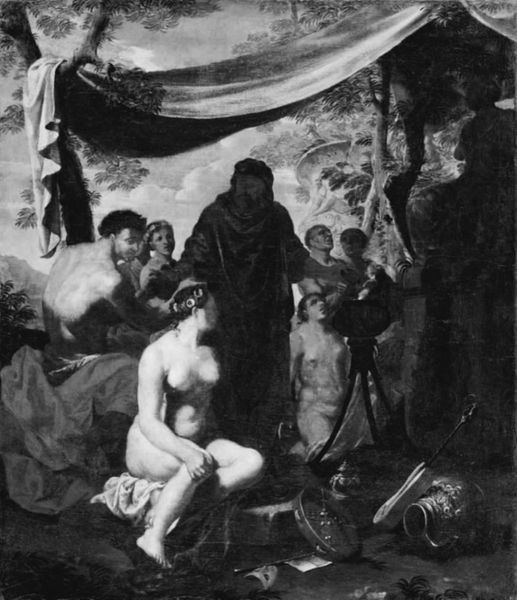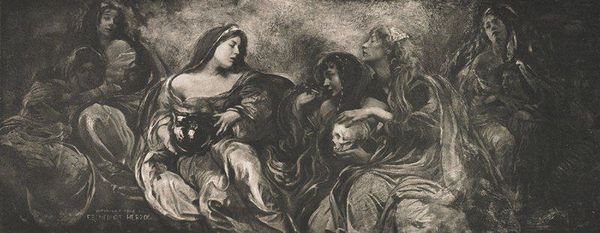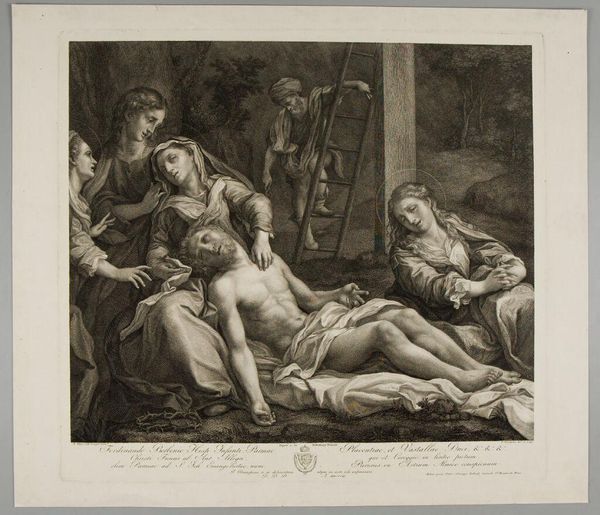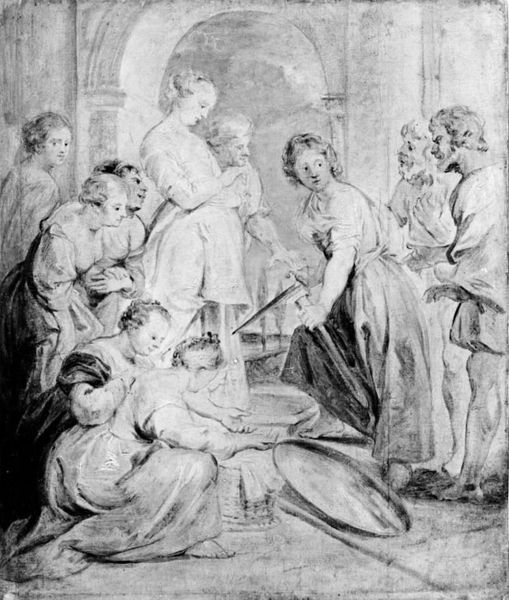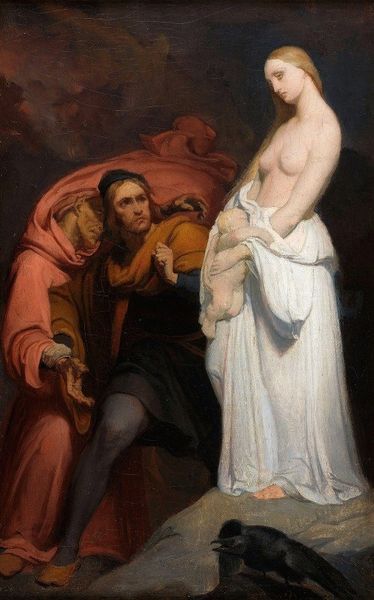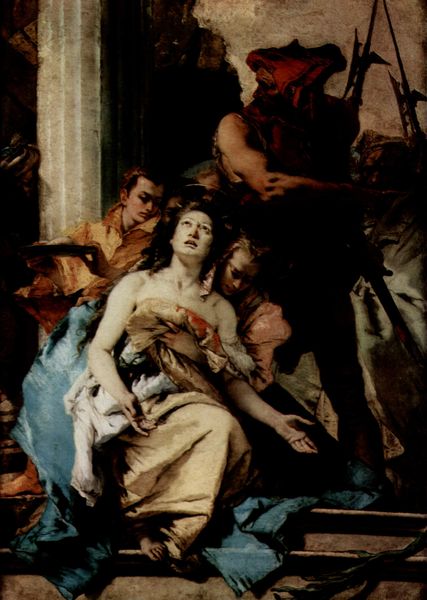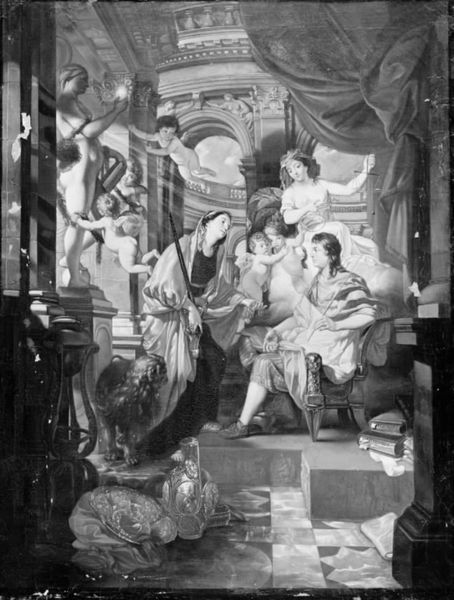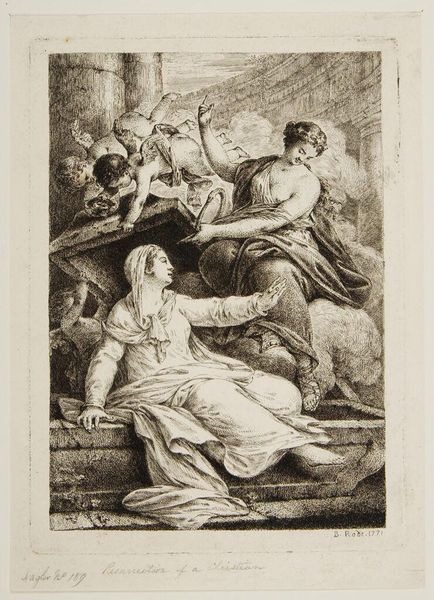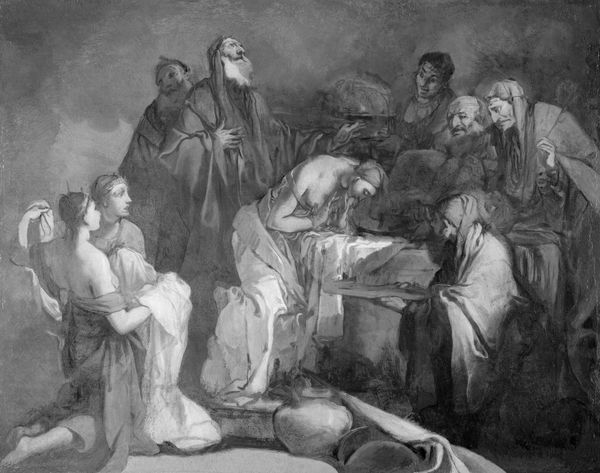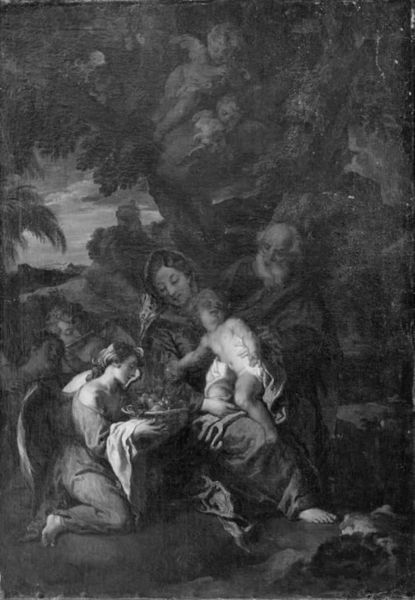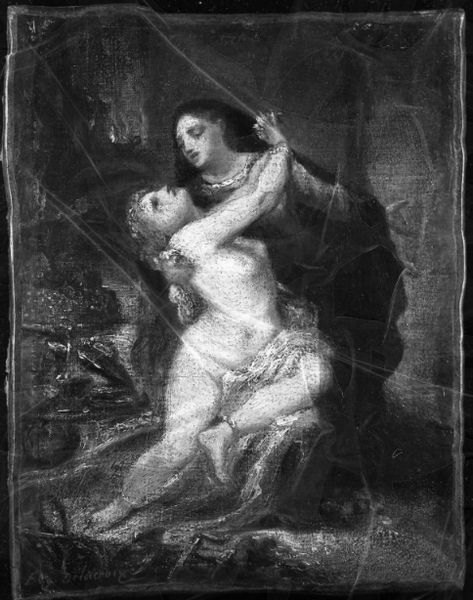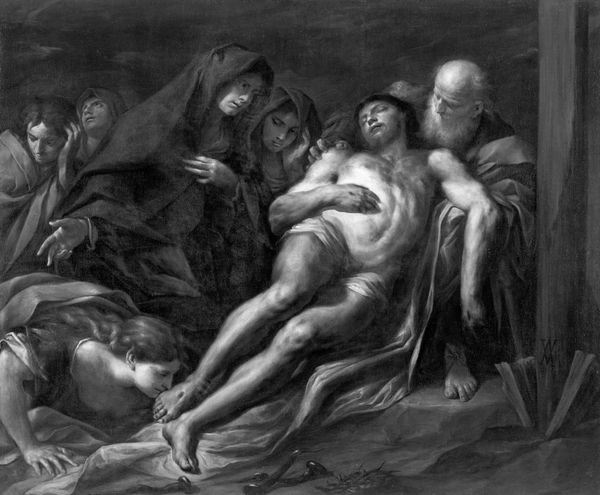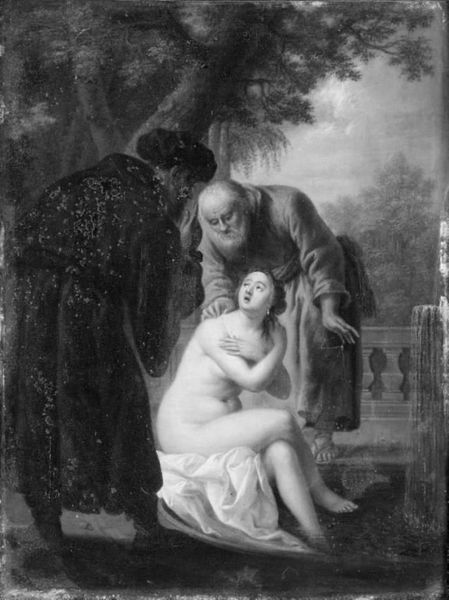
painting
#
baroque
#
portrait
#
painting
#
black and white format
#
figuration
#
group-portraits
#
black and white
#
history-painting
#
realism
Dimensions: 127 cm (height) x 92 cm (width) (Netto)
Editor: Here we have "The Adoration of the Shepherds," a painting made sometime between 1618 and 1766, currently housed at the SMK. The artist is anonymous, unfortunately. It feels incredibly intimate despite the large group of figures depicted, almost like a hushed reverence permeates the scene. What do you see in this piece? Curator: I see layers of cultural memory intertwined. Notice how the artist uses a well-worn visual vocabulary to depict the Nativity. The arrangement, the characters, all draw on a shared understanding of the scene. But the emotion... that's where the deeper symbolism lies. Editor: Could you elaborate on that deeper symbolism? Curator: Observe how the faces of the shepherds, their expressions... there's a mixture of awe, curiosity, but also a hint of weariness. These aren't idealized figures. Their wrinkled faces, the set of their mouths, tells a story of labor and hardship. The artist seems interested in bridging the gap between the divine and the everyday, to humanize the holy family, no? Editor: Yes, that's definitely apparent in the way the figures are arranged. So you're saying that this isn't just a religious painting, but also a commentary on social classes, then? Curator: I think it is difficult not to conclude that the artist is deliberately drawing upon the viewer’s social understanding of this Biblical scene and what it means to them as a function of the circumstances. What continuities, from our time, do you detect that are triggered in you by the depiction of a social and familial scene like this? Editor: I hadn’t considered it from that perspective! Seeing the painting as both a depiction of a historical moment and a commentary on society adds a whole new layer of complexity. Curator: Exactly! It reveals how even seemingly straightforward images carry complex layers of meaning rooted in cultural understanding and shared emotional experiences. Editor: Well, thank you! I have so much more to consider now when viewing this work of art. Curator: The image certainly left an impression on me, triggering contemplations on the power of faith and representation over the course of centuries.
Comments
No comments
Be the first to comment and join the conversation on the ultimate creative platform.

